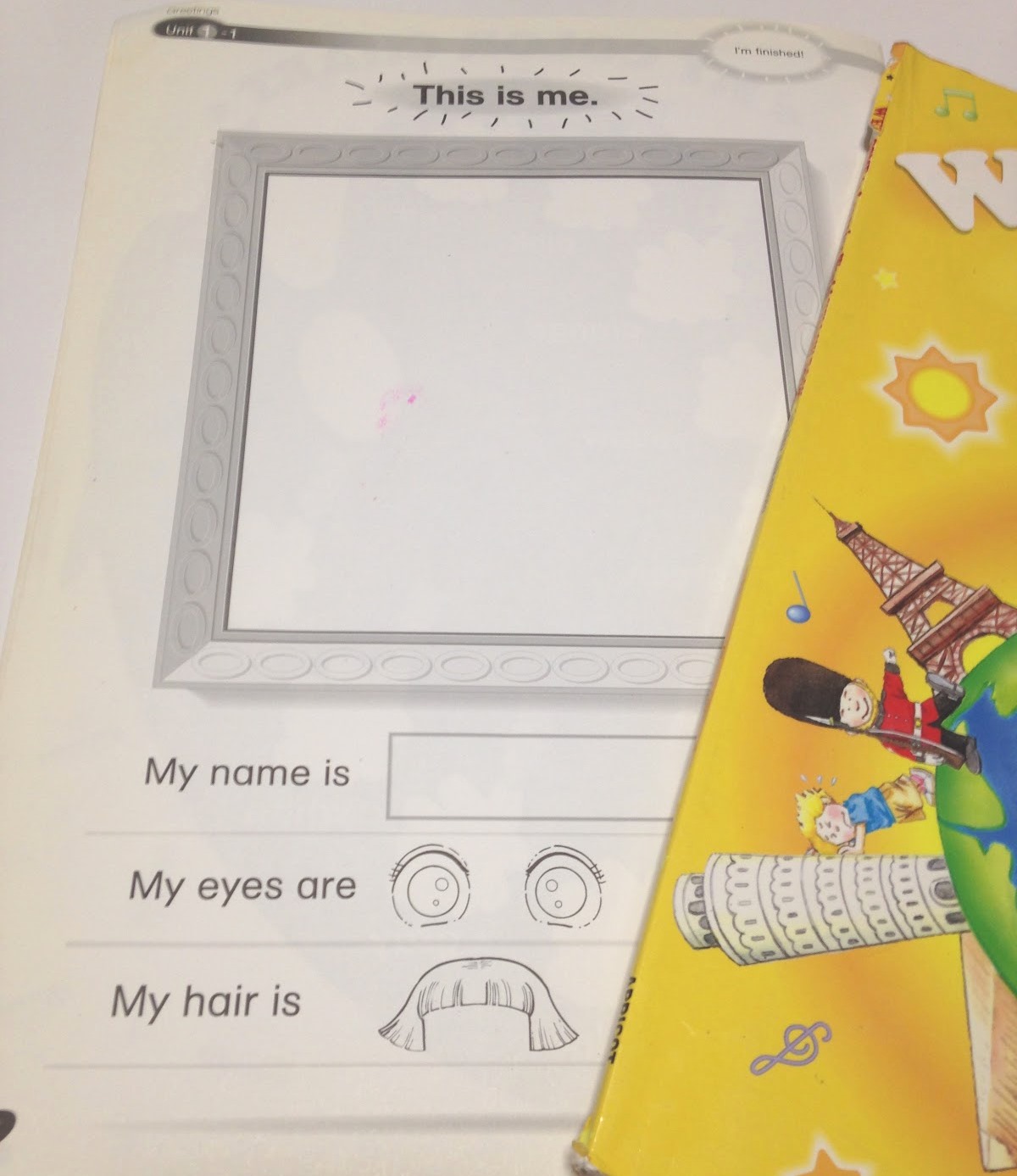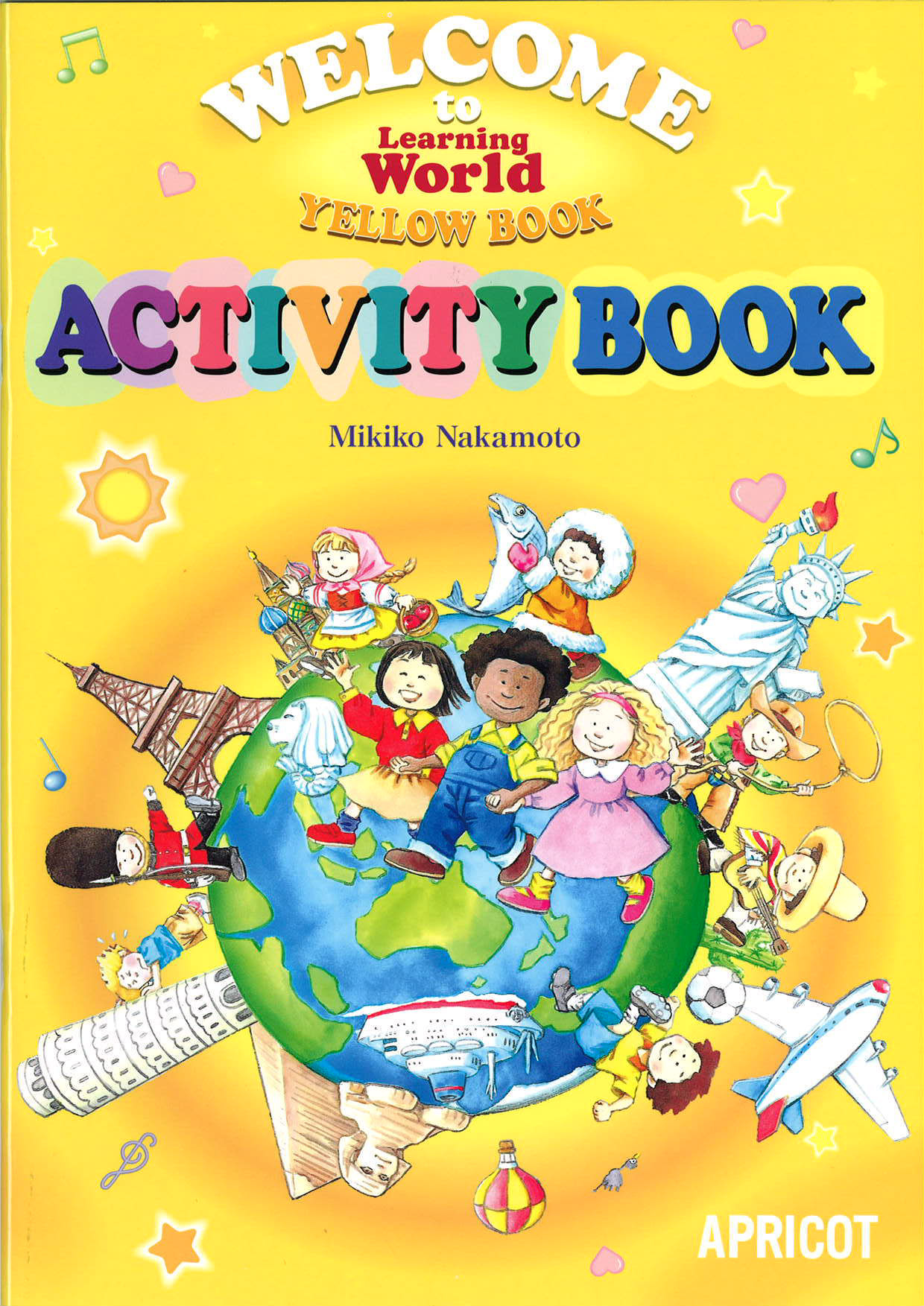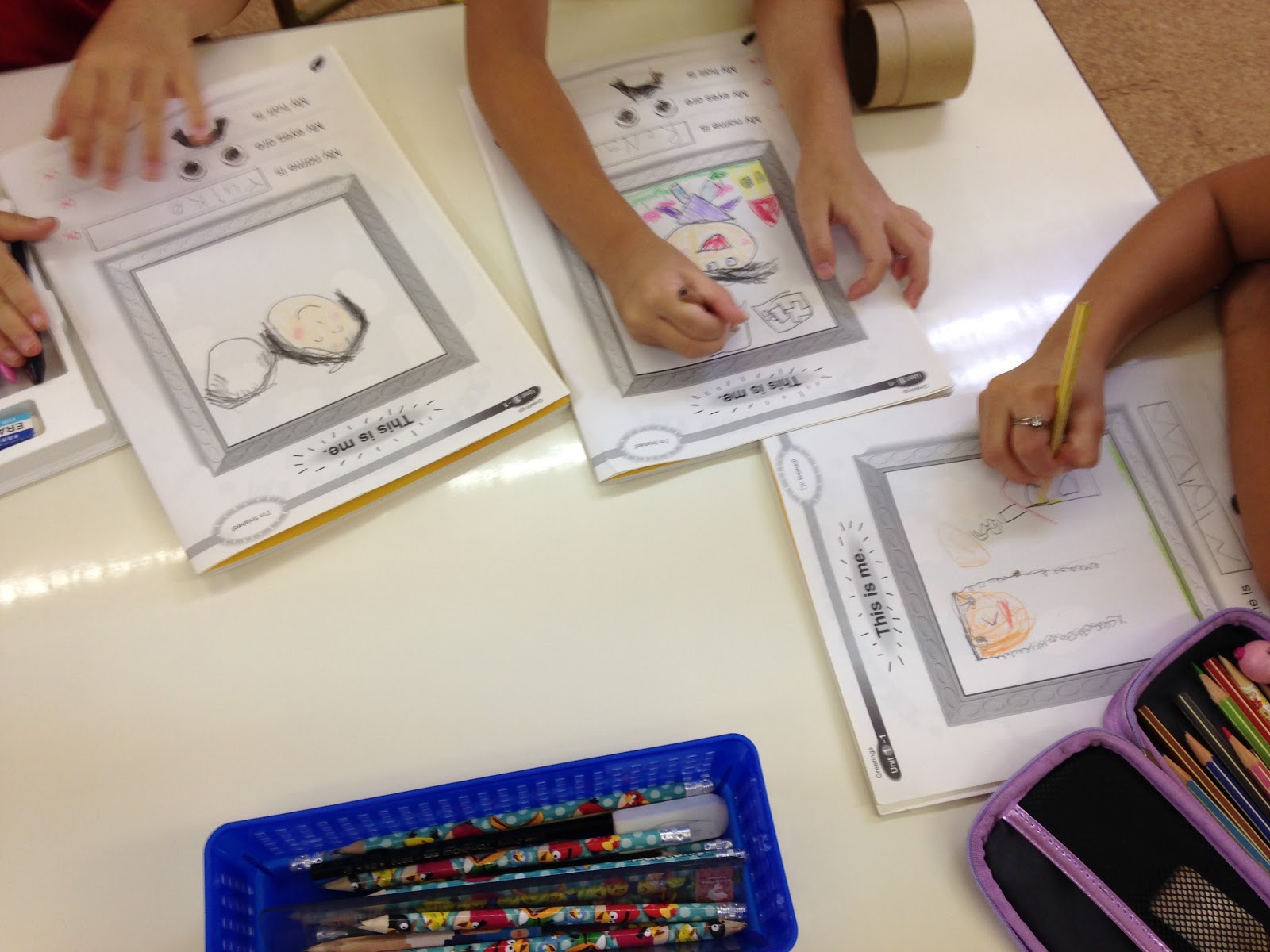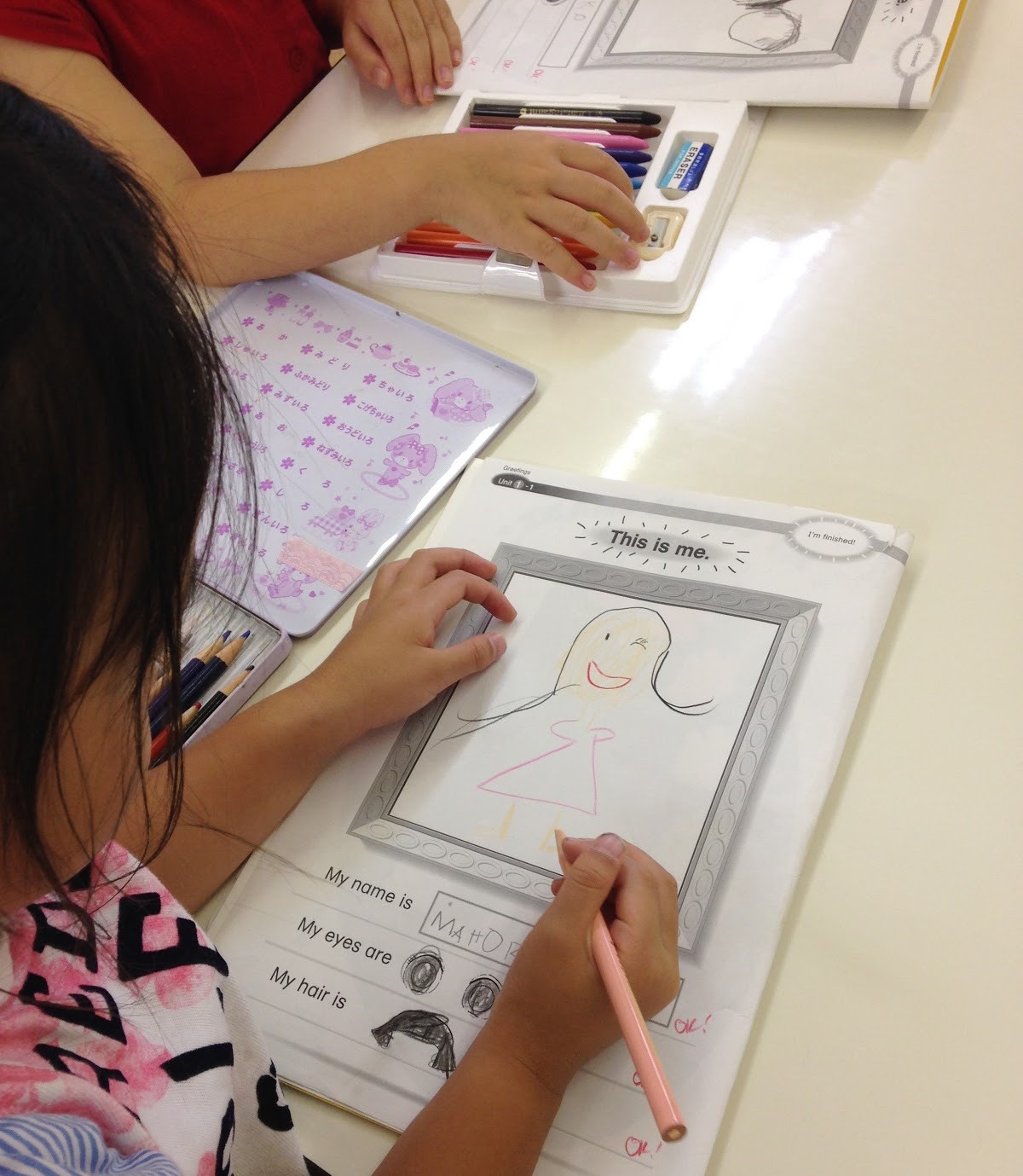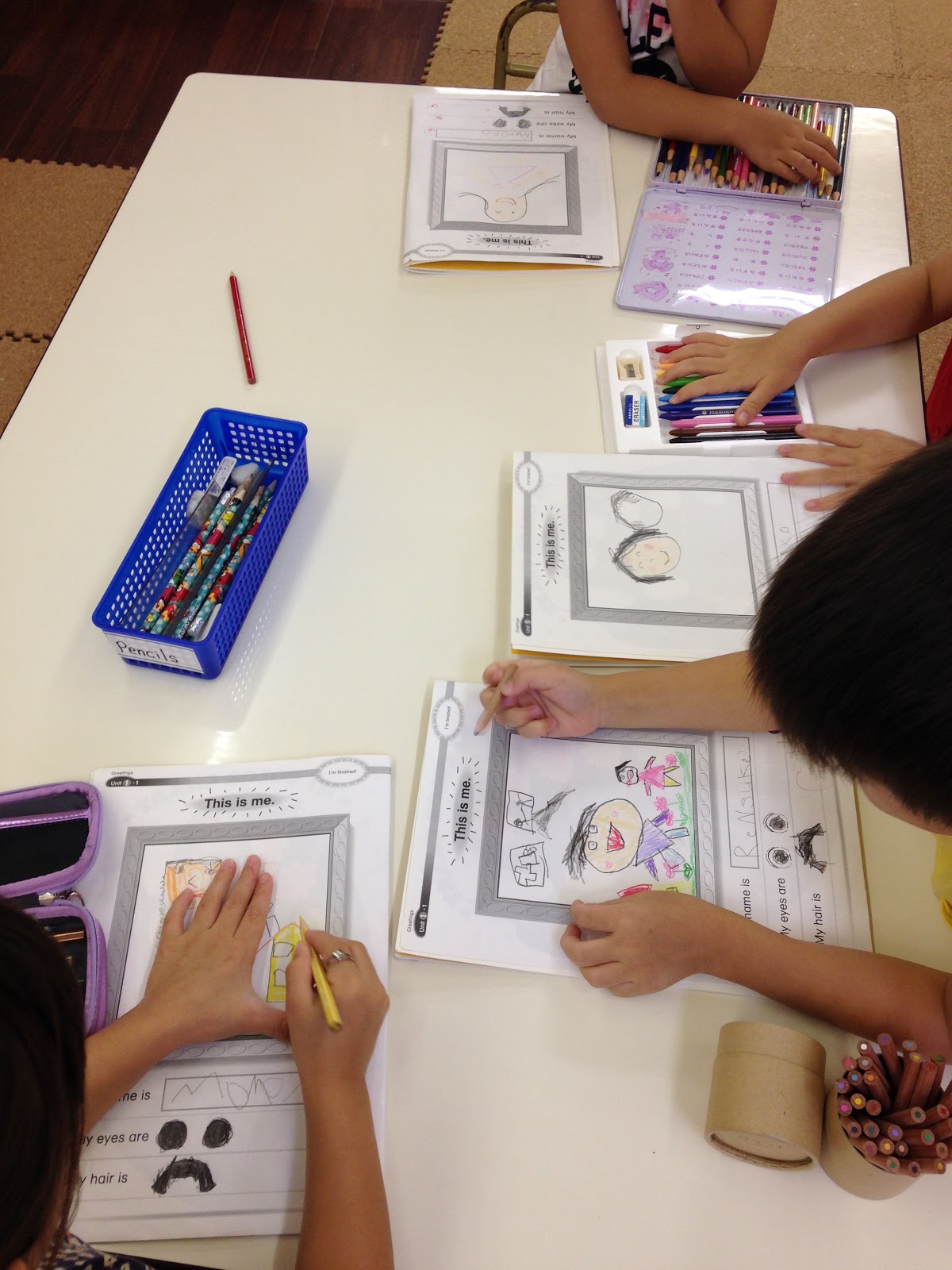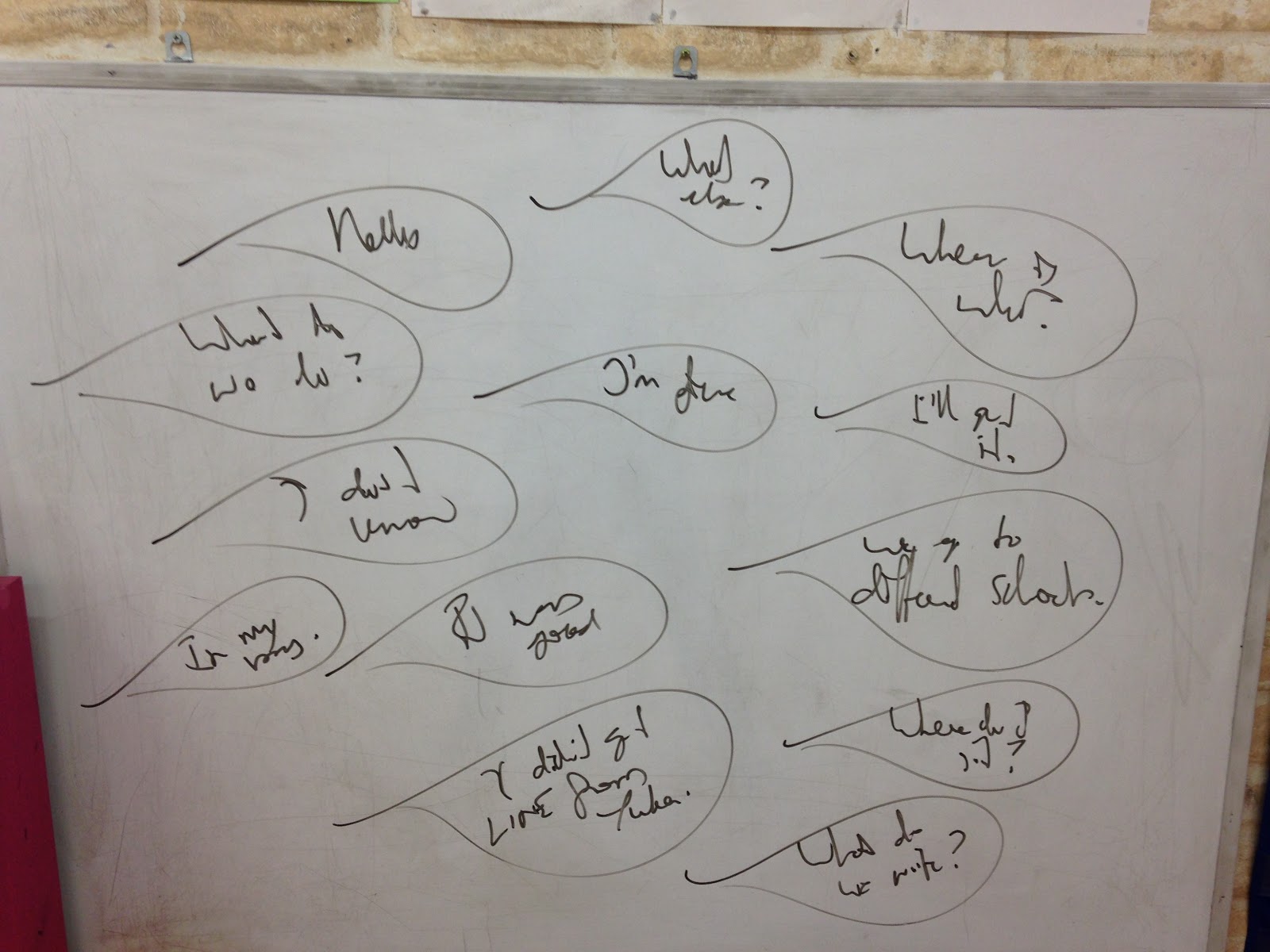

- 54. 10 Useful Pieces of Advice for Teaching with LEARNING WORLD #9 & 10
- 55. “Happy New Year!” “I don’t say that.”
- 53. Halloween 2019
- 52. READY Workbook Pg. 17
- 51. English-Uplift 1-Day Seminars
- 50. READY Workbook - vocabulary copying activity
- 49. 10 Useful Pieces of Advice for Teaching with LEARNING WORLD #8
- 48. 10 Useful Pieces of Advice for Teaching with LEARNING WORLD #7
- 47. 10 Useful Pieces of Advice for Teaching with LEARNING WORLD #6
- 46. 10 Useful Pieces of Advice for Teaching with LEARNING WORLD #5
- 45. 10 Useful Pieces of Advice for Teaching with LEARNING WORLD #4
- 44. 10 Useful Pieces of Advice for Teaching with LEARNING WORLD #3
- Kindergarten aged students
- Lower Elementary-school aged students
- Upper Elementary-school aged students
- Junior High and older students
- Others
20. “THIS IS ME” – WELCOME Yellow Activity Book page 2.
The objective of this page is for students to give a short presentation to their classmates using the English at the bottom: “My name is …….”, “My eyes are….” and “My hair is …..”
Now perhaps it’s just me, but I’ve always found that this English presented together at one time is quite challenging for young kids – particularly if they’re in their first year of lessons, as many students on WELCOME Yellow are. It dawned on me recently though that this page needn’t be completed in one lesson(!) You can spend 10 minutes a lesson on each section of this page, and take perhaps 4 lessons to finish it.
Lesson 1: “My hair is ….”
Yes, that’s right; start at the bottom. This is because coloring a picture of hair is easier than writing a name.
Students color the picture and the English “My hair is…” is introduced and practiced. (Incidentally, the Springboard Readers collection has an excellent book in Level 1 called “Hair” which can be used as supplementary material).
Lesson 2: ”My eyes are…”
Students color the picture and the English “My eyes are…” is introduced and practiced. (Incidentally, “Whose Shirt?” storybook from the Chants-de-Ehon Series has an excellent page activity on the last page where students match eyes with animals).
Naturally, at this time, “My hair is…” can be reviewed. The students practice these two expressions together. This is an important step because combining “is” and “are” over two separate sentences can be fairly challenging.
Lesson 3: “My name is….”
Students write their name in the box. This in itself can be problematic, especially for very young kids in their first year and who just happen to have slightly long names…! Of course, “perfect writing” is not the objective here, and of course students can be assisted. An alternative to writing is that the teacher write students’ names on small paper, the students have to find their paper, and then glue it in the box.
Naturally, at this time, “My hair is…” and “My eyes are…” can be reviewed. The students practice the three expressions together.
Once the students have managed to say the three expressions together, the most difficult aspect of this page is overcome.
Lesson 4: Students draw in the large box, and practice presentation.
Students should be encouraged to draw more than just their face. The box is large, and the English says “This is me”. So pictures of things that students like – sports, food, animals etc. should also be included.
All three sentences are reviewed.
Presentations are practiced together, not individually.
⇒⇒⇒ Click for audio of a short group-practice.
Lesson 5: Individual Presentations
Of course, by the time students present in front of the class, none of the English that they say presents any new information to their classmates, but the experience of standing in front of the class and presenting their individual work in a loud voice is of utmost importance.
Interaction on students’ drawings in the large box should be done after each presentation.
⇒⇒⇒ Click for audio of presentations

19. The LEARNING WORLD Teacher Development Meeting
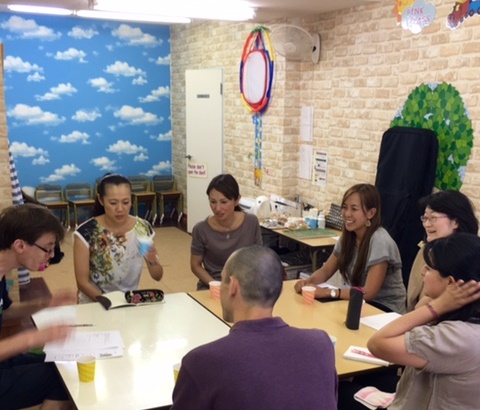 Teacher Development Meeting last Sunday was productive and fun. A total of seven teachers in all, representing schools in Chiba, Kawasaki, Tokyo and Nagano. The venue was my classroom at Hello Kids in Komazawa.
Teacher Development Meeting last Sunday was productive and fun. A total of seven teachers in all, representing schools in Chiba, Kawasaki, Tokyo and Nagano. The venue was my classroom at Hello Kids in Komazawa.
We discussed these issues:
– Songs and chants from the WELCOME series. How manageable were they for our students in terms of speed and challenge level?
– Student motivation during Book 3.
– Homework stamp, “Blue stickers vs Gold stickers”
– Positive reinforcers: stickers, points, praise, game-time etc.
It’s interesting how we teachers sometimes feel the value of actions we take in the classroom, but at the same time feel a sense of “perhaps in the long-term, it may not necessarily be good…”
Stickers or a point-system for “good behavior” in the classroom is a case in point. While we sometimes use them to encourage positive behavior, it can possibly lead to students expecting something EVERY time they behave positively.
Later in the session I had a short activity idea from Book 3 to present, as well as individual student work to show.
All in all it was a great afternoon of teaching development.
***************************************************************************************
Now, arguably the biggest dates of the year are coming up! Be sure to pen them into your schedule:
November 27th: LEARNING WORLD WORKSHOP Osaka
December 4th: LEARNING WORLD WORKSHOP Tokyo
December 11th: LEARNING WORLD WORKSHOP Nagoya ⇒ Click here!
It’s honor and a pleasure to be sharing presentation time this year at these workshops with Kawahara-sensei and Nakamoto-sensei!
I look forward to seeing you there!
18. LW Bk 3 “What are you doing?”
“WHAT ARE YOU DOING?”
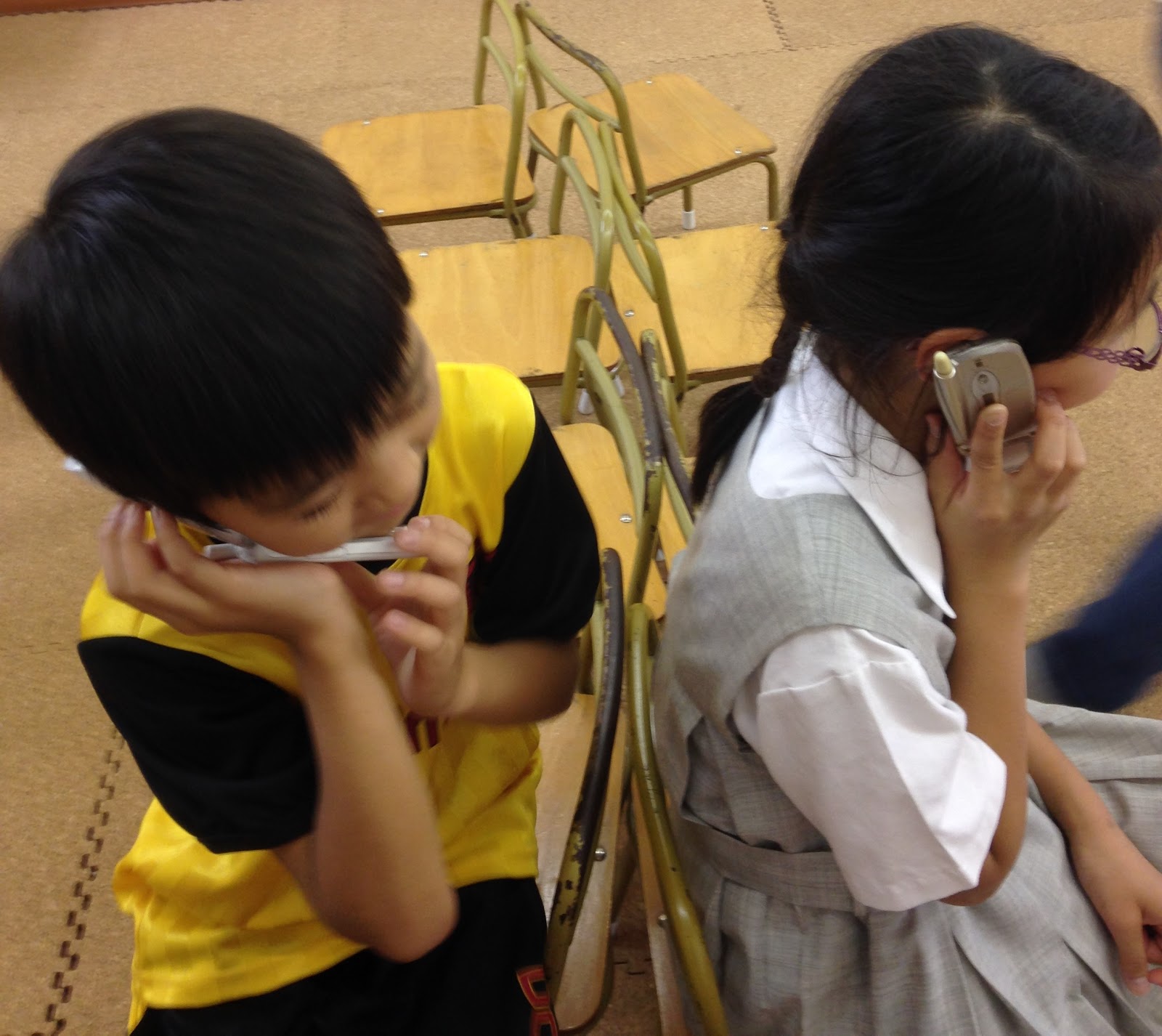
“♪Busy, busy, busy. We are busy all day long. Mom is cooking all day long. Dad is shopping all day long…”
The chant on pg.12 of Learning World Book 3 is a particular favorite with my students. They like the rhythm of it, the challenge level of the vocabulary is not too high, and the tempo is manageable. The increase in tempo the second and third time around adds surprise and excitement.
Now, the additional vocabulary in the WORDS section is quite useful: “practicing the piano”, “driving a car” “listening to music”, “talking with friends” and “waiting for a bus”. I had always felt the need for an activity that uses this vocabulary. So I thought of one that I’d like to share with you here. If you have old, unused cell-phones at your disposal, they can come in handy now! (Incidentally, phone company stores and outlets sometimes have a basket of old phones that you are welcome to take).
To set up, first arrange classroom chairs in pairs, back to back. There is one chair for each student in the class. Phone conversations will happen in these chairs.
Next, anywhere in the room away from the paired chairs, have students open their textbooks to page 12 and a pencil ready. In time, students will circle the pictures in the WORDS section.
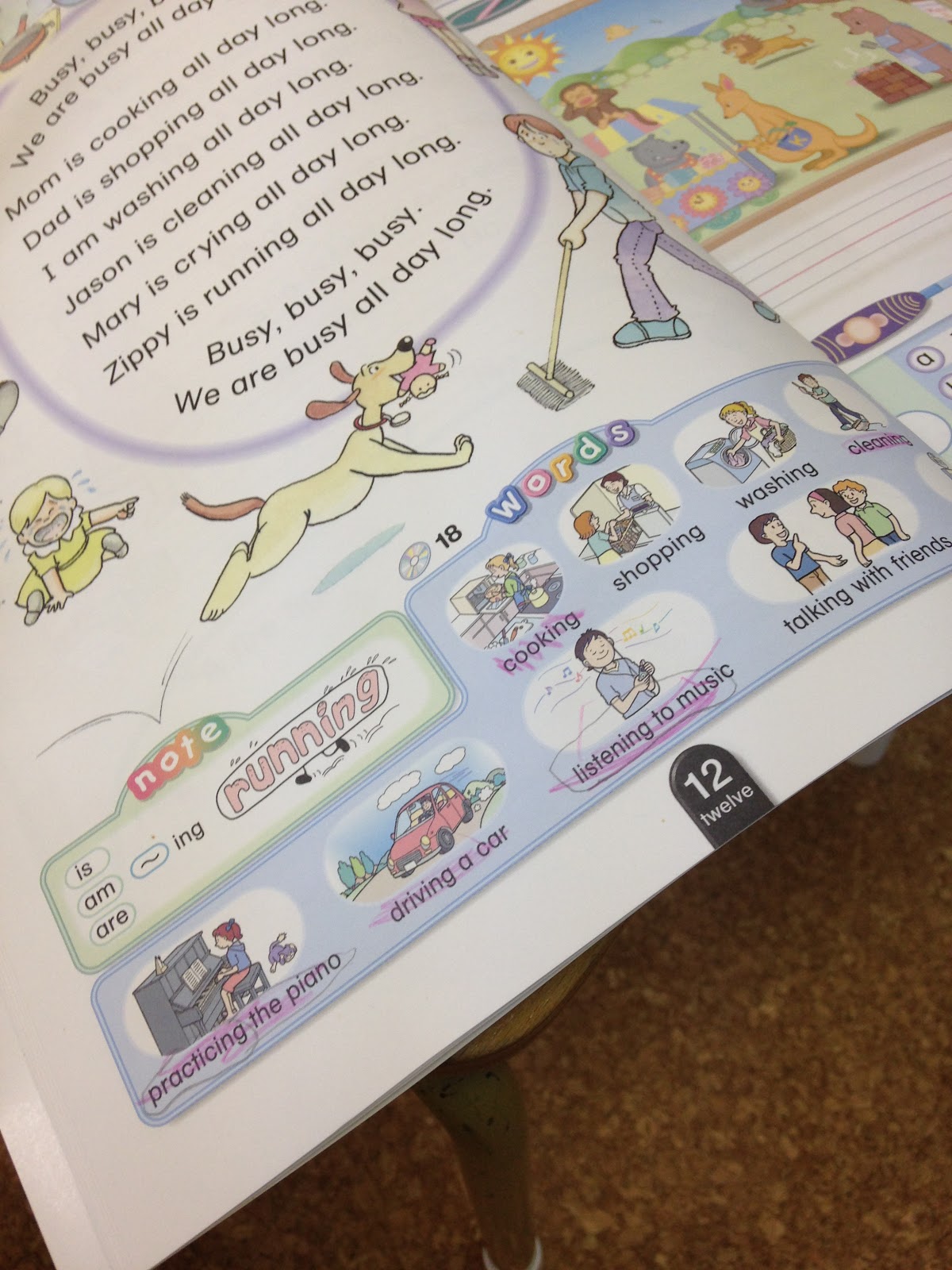
Next, give students a “cell-phone”.
The activity starts with students sitting in the paired chairs and having the following phone conversation:
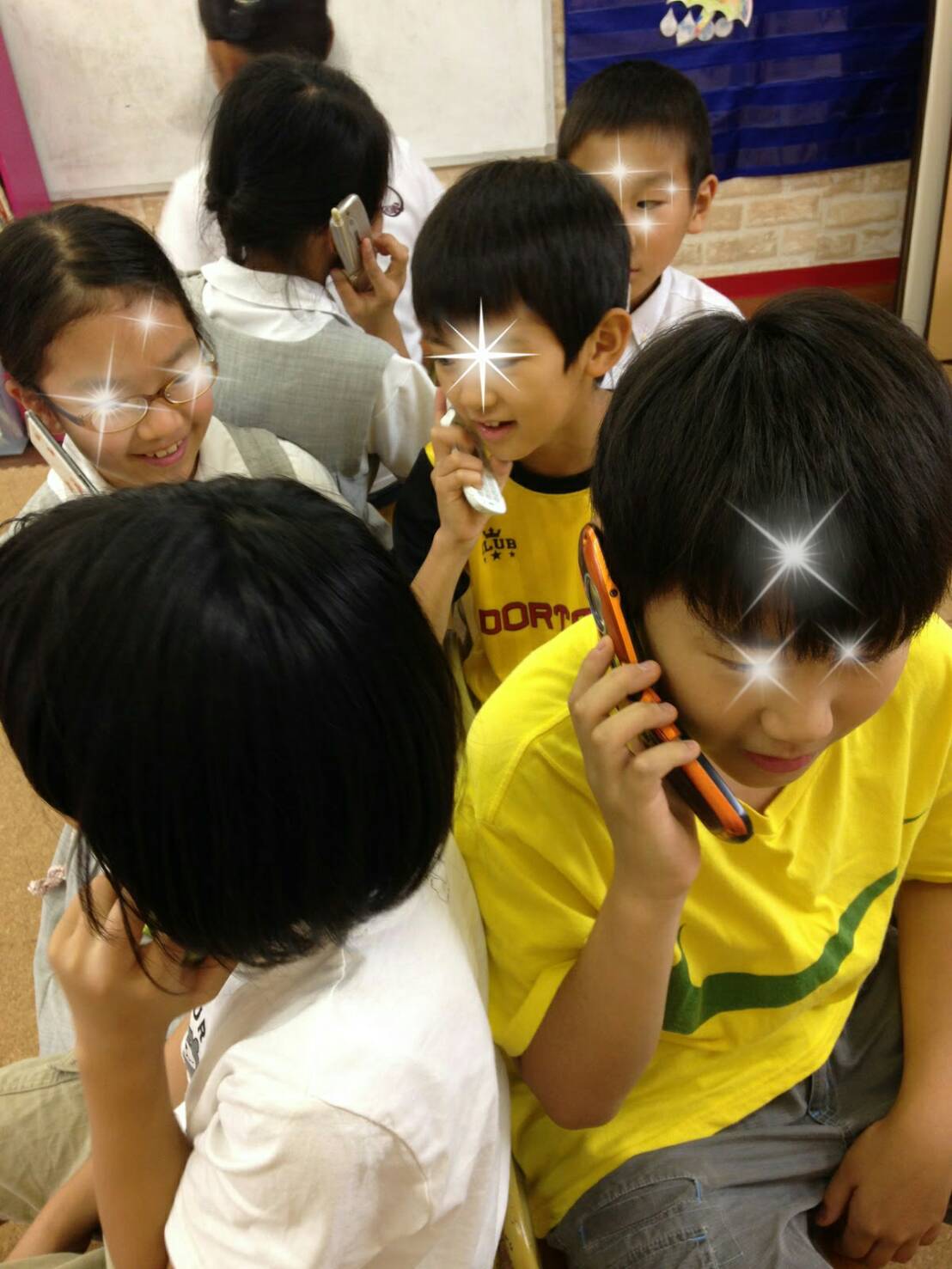
“Hello?”
“Hello, it’s (name). How are you?”
“Hello (name)! I’m fine”.
“What are you doing right now?”
“I’m [cooking/shopping/washing/cleaning….any ONE of the vocabulary items from WORDS]. How about you? What are YOU doing?”
“I’m [cooking/shopping/washing/cleaning….any ONE of the vocabulary items from WORDS].”
“I see! Bye!”
“Bye!”
The opening and the closing of the conversation can be simplified or made more challenging, but the point is that students listen carefully to their friends’ answer to “What are you doing right now?” because when the conversation is finished, students return to their textbooks and circle the vocabulary item their friend used in their conversation.
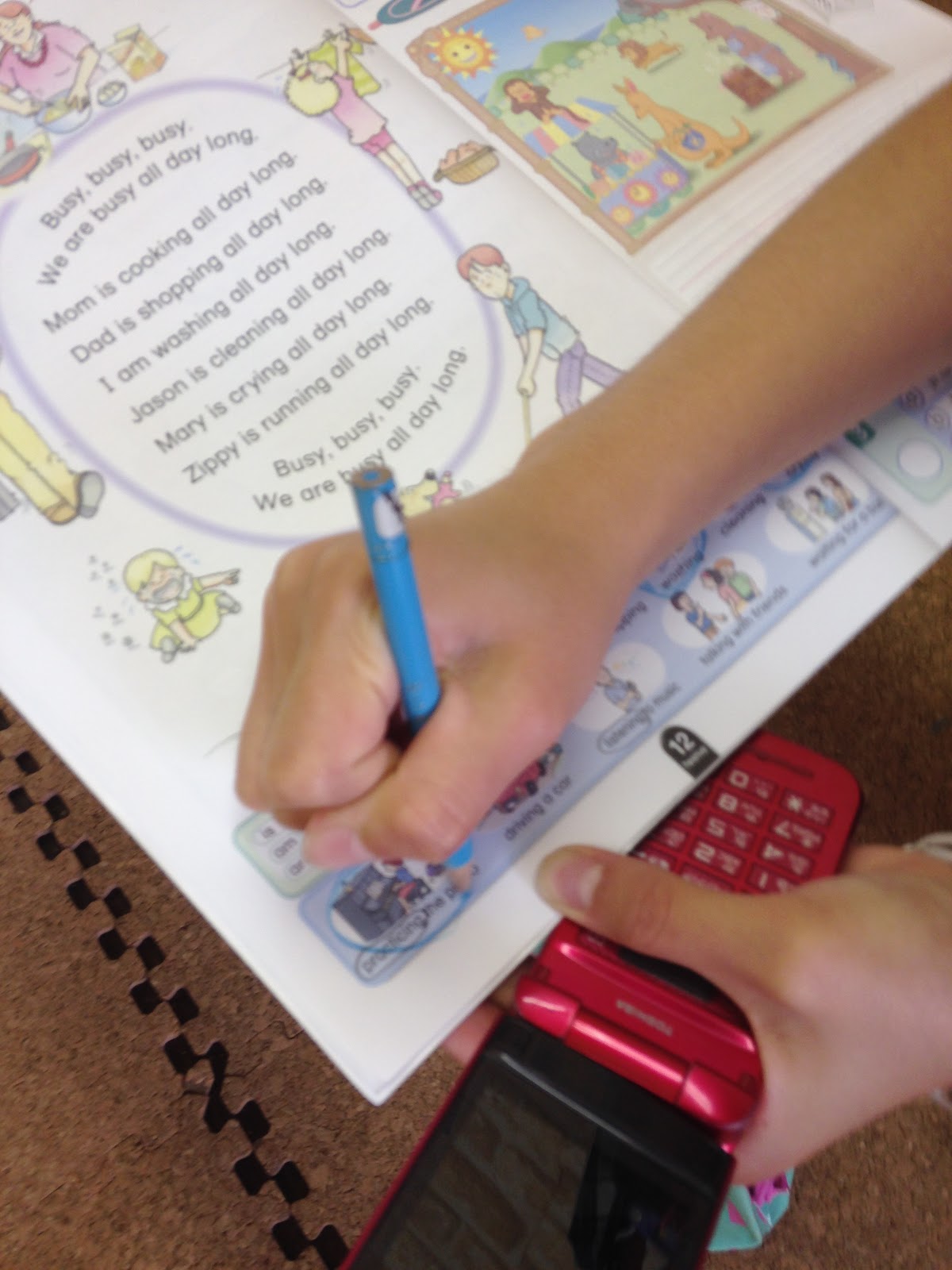
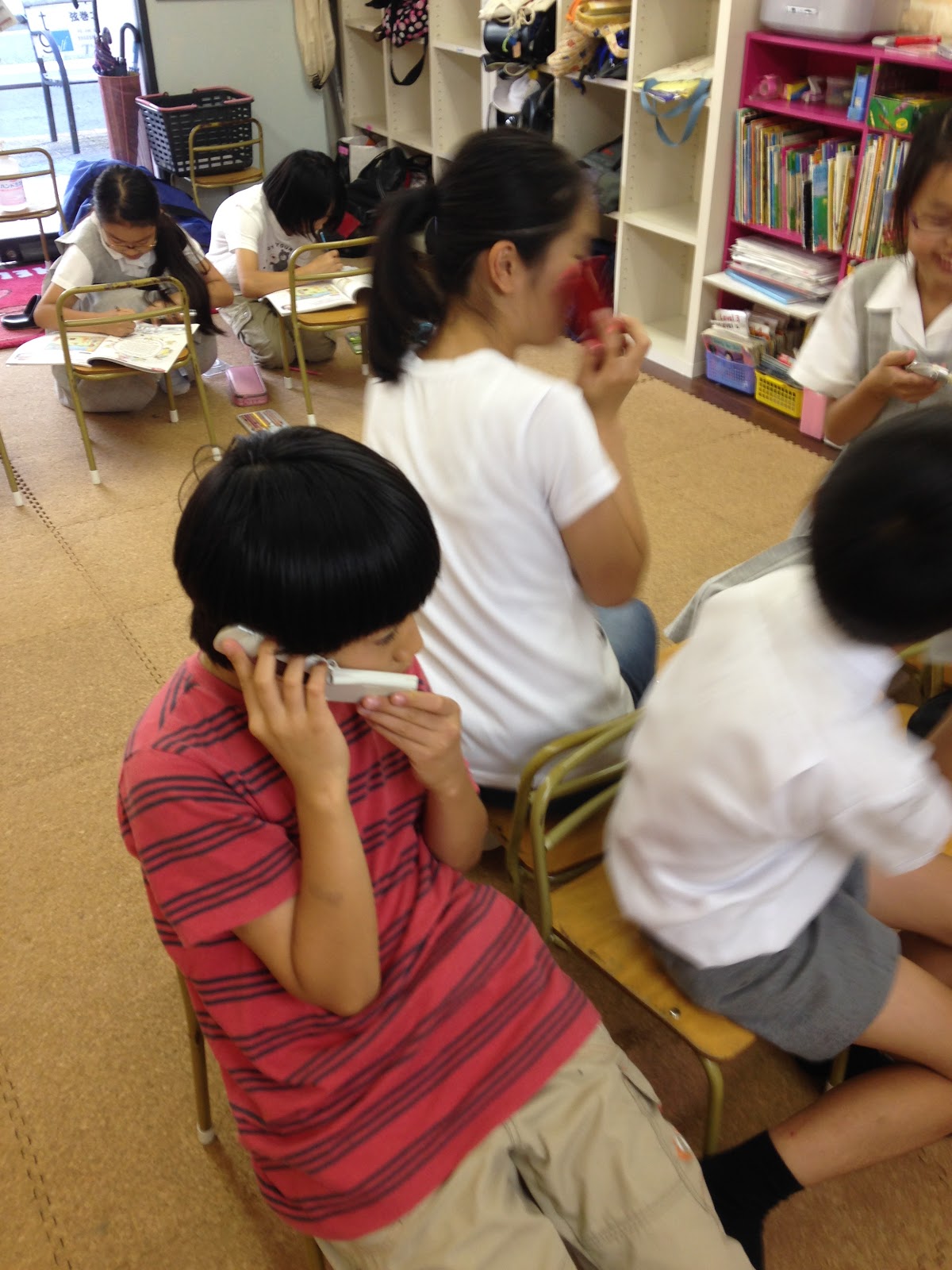
Then, students go and have a new conversation on a different pair of chairs with a different friend and (importantly) using a different vocabulary item. In other words, students cannot simply answer “I’m shopping” or “I’m cooking” with every conversation. They must try and use all the vocabulary items over all the conversations.
The activity is complete when students have circled every picture in the WORDS section.
It’s possible of course that a friend will answer with a vocabulary item that’s already been circled. That’s unlucky. Students must continue having new phone conversations with different friends until every picture is circled(!)
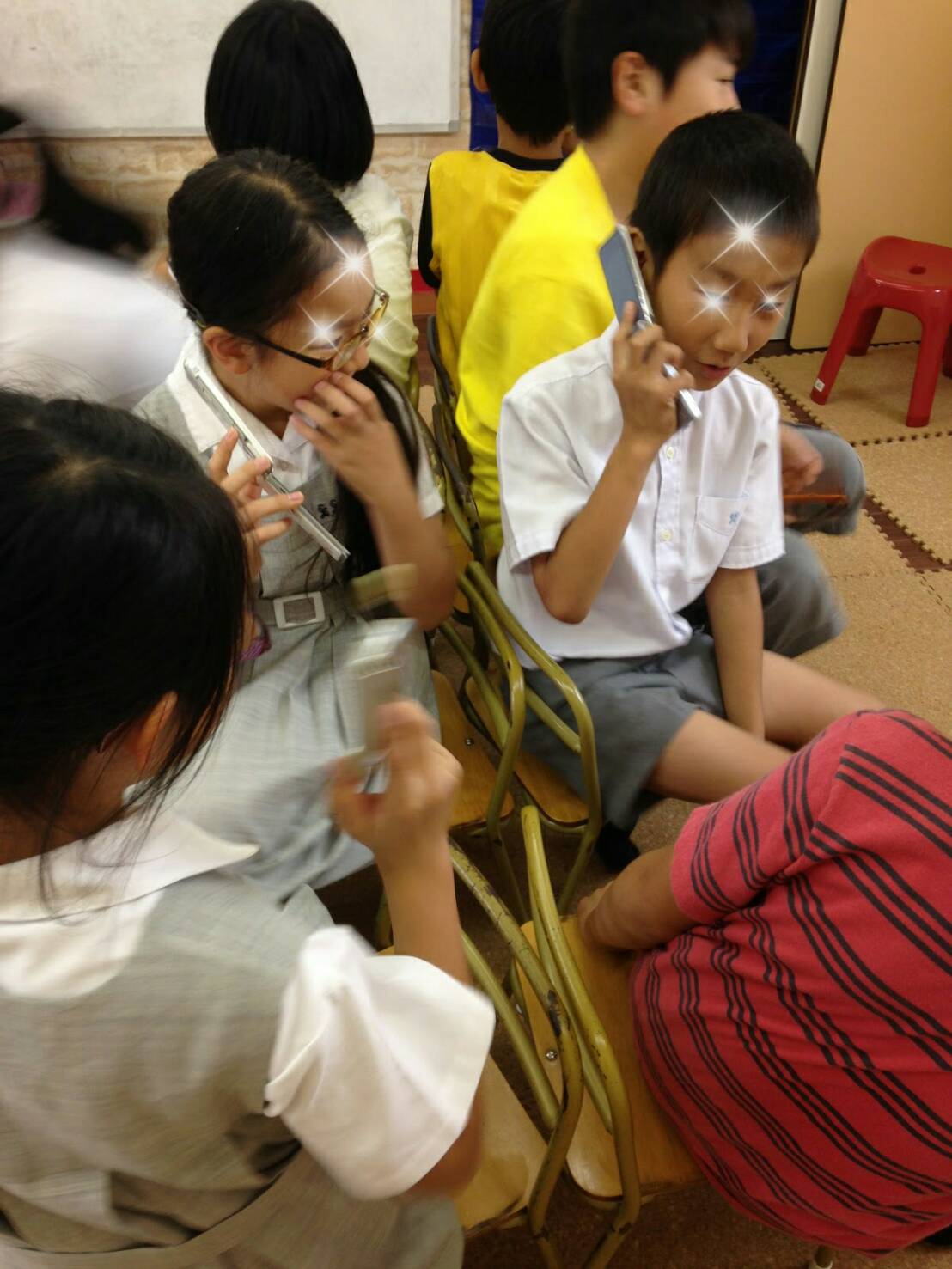
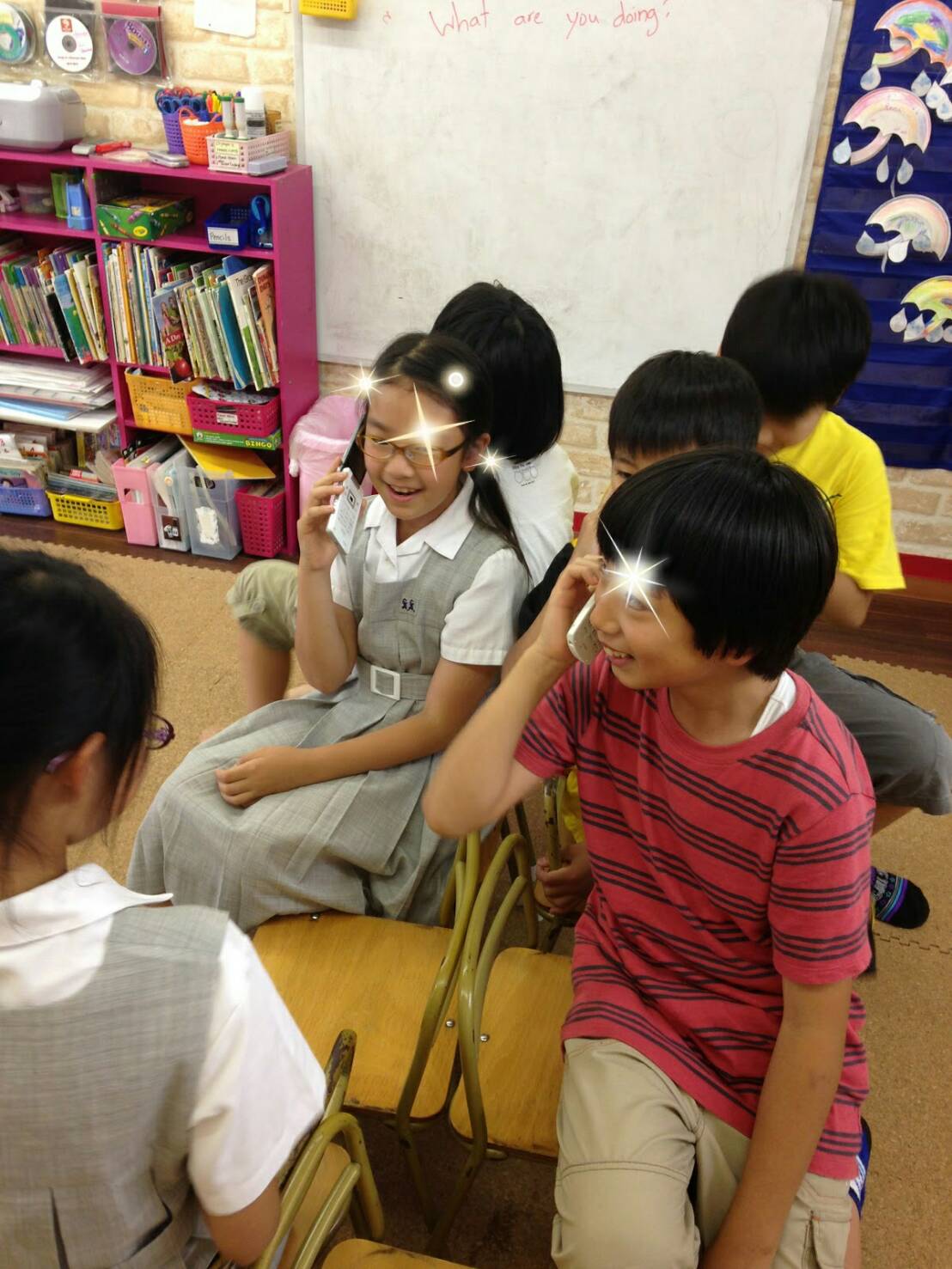
17. JUNIOR HIGH STUDENTS (Part 2.)
Please read Part 1 for the full details on the compromise I had to find with the students of my JH classes. Their need for my classes to contain ”more reading and writing activities” and ”more Japanese explanation of grammar rules” was I felt more of a perceived need rather than an actual need, but my school’s need to make sure students don’t quit is very real, so I found a comfortable compromise for all of us. And as part of that compromise I tried an interesting idea recently…
Within the first 15 minutes of the lesson I had managed to generate the following English from the students:
Hello.
I’m fine.
It was good.
Where is who?
I don’t know.
We go to different schools.
I didn’t get LINE from Yuka.
In my bag
What else?
I’ll get it.
Where do I sit?
What do we do?
What do we write?
At the 15 minute mark I had the students sit together and brainstorm all the English they had used in the last 15 minutes, since entering the classroom. I wrote each expression on the whiteboard as the students recalled it – however as you can see from the photo, my writing was (deliberately) messy.
I then had the students write all the expressions in their notebooks.
Now, the scrawl on the whiteboard was clear enough to remind students what expressions to write, but it was too messy to provide details like spelling. As the students wrote each one in their notebooks they helped each other with spelling and there was discussion among themselves about grammar structures and rules. As they worked, more English expressions were generated:
What does this say?
Move please, Matthew. I can’t see the whiteboard.
Which one?
I wrote it.
I didn’t say anything.
etc.
All were added messily to the list on the whiteboard and subsequently to the list in the students’ notebooks.
The lesson became truly representative of the compromise I had reached with the students. It involved writing, grammar discussion, and most importantly, real English communication.
16.JUNIOR HIGH STUDENTS (Part 1.)
In your teaching schedule, do you have any JH classes? While teaching younger kids is my forte, this year I have more JH classes each week than at any other time in my teaching career!
I quite like them. JH students have a complex mixture of attitudes towards English, school, their teachers, their families, their friends and themselves. I find myself preparing well for these lessons because unlike younger students, these kids fully know when I don’t! I’m fortunate that for the most part my students seem to enjoy my lessons. Most (but not all) of them have come through a Learning World experience, and we’ve built a good degree of mutual trust over a good number of years.
However, I was surprised to learn recently that one of my students, JH 2nd grader, was considering leaving my class because she felt it wasn’t meeting her needs. She wanted a class that was “more focused on reading, writing, grammar and Japanese explanation”. With more focus on these areas, she felt she could do better at her school English, as her school lessons shared the same focus areas.
For the record, my JH lessons are designed around grammar points taken directly from JH textbooks, and include activities that involve reading and writing. Every time. My student likely missed this fact because the communicative nature of the lessons may have hidden it.
She was right though when she claimed that my lessons don’t contain any Japanese explanation. I don’t believe Japanese explanations are necessary. But I must acknowledge that my student believes they are. In fact she had voiced her concerns with me regarding this on a previous occasion as well; it was clear though that my reasons for not including Japanese explanations hadn’t convinced her.
I definitely didn’t want her to quit, so I decided to compromise. In class the following week I announced that the lessons from now on would contain Japanese explanations of grammar rules and structure. These however would not come from me – they would come instead from the students themselves. I suggested that whenever anyone felt the need for a Japanese explanation, they were welcome to ask for it from their classmates, and classmates were welcome to give it. I would continue to use only English but I would not discourage Q&A about grammar conducted in Japanese.
I’m happy to report that the student began to enjoy her class after we implemented the change – and in fact, the class atmosphere generally warmed. The students liked my insistence on only using English with them because they felt benefits to their listening ability. However they also enjoyed the opportunity to confirm areas of grammar among themselves in Japanese.
*Part 2 coming soon!












